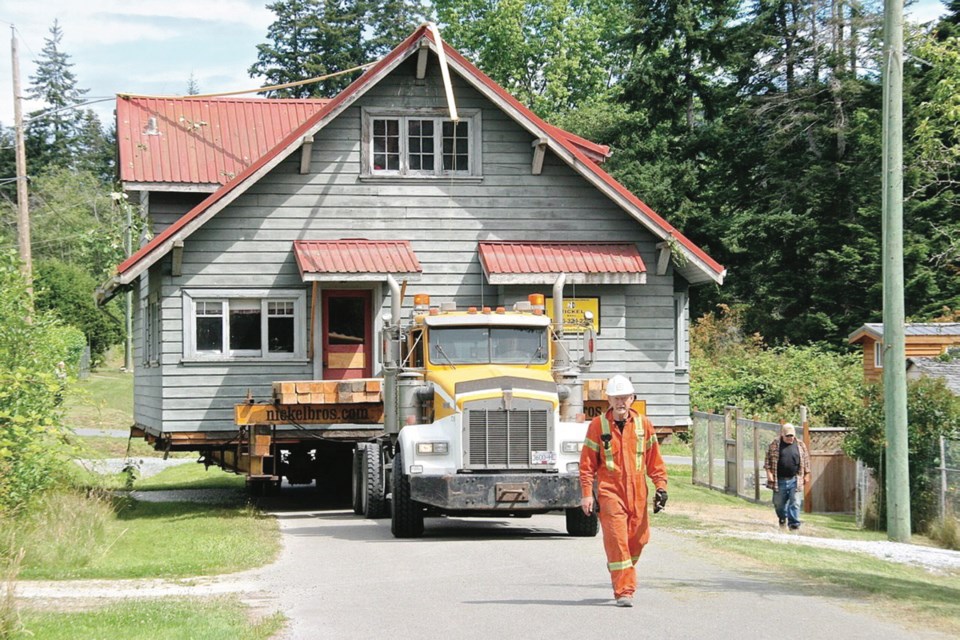This is the second in a two-part series on salvaging and reusing houses on the Island. Read Part 1 here: Three houses bound for demolition get new life
It’s a curious thing that our society is deeply into recycling — we separate our garbage, sort organics and crush cereal boxes — yet we throw away whole buildings.
“Few people appreciate the volume of high-quality stuff that we dump in the garbage every time we demolish a house,” says Jimmy Connelly, manager of sales and estimating for Nickel Bros. on South Vancouver Island.
“I don’t think a lot of people have any idea how much time, energy and material we waste when we do this.”
The company salvages homes that would otherwise be razed. It lifts, trucks and barges buildings to locations all over this Island, the Gulf and San Juan Islands, Vancouver and Washington state — everything from small bungalows to custom, high-end and architecturally designed mansions.
With offices in Nanaimo, Port Coquitlam and Washington state, Nickel Bros. is the largest house mover in the Pacific Northwest. Started by two brothers in Manitoba and moved to the coast in 1956, it’s still a family business.

Connelly, who has been moving houses for 25 years, says North Americans are the biggest wasters of construction materials in the world. “Thirty-five per cent of our landfills is demolition debris, made up of houses that have been crunched and munched.”
That’s not just a waste of good wood, glass and metal, he says — it’s a huge waste of labour and craftsmanship. “Enormous economic energy goes into building a house, and then more is spent tearing it down and replacing it.”
Meanwhile, the cost of demolition is going through the roof, in part because of a new focus on hazardous materials — once disturbed, for example, asbestos must be disposed of by a special team.
New rules requiring the sorting and separation of materials such as drywall and metals have also added to the expense.
A decade ago, demolition of an average home cost a few thousand dollars, but now the total bill can stretch to tens of thousands, or as much as $100,000 for a large house.
That’s why houses slated for demolition are often given away for free — it’s a win for developer and new homeowner alike, Connelly says. While house moving takes time, and “we can’t compete with the speed of an excavator,” a house can weigh 100 tonnes or more — which is a lot of debris. “So it is a huge saving for a builder who wants to get started.”
Why are so many houses being demolished rather than renovated?
“Primarily because builders want to work clean and don’t want to go backward to go forward,” says Connelly, whose company also lifts houses to double the square footage, and “skates” them — shifting a house sideways or turning it.
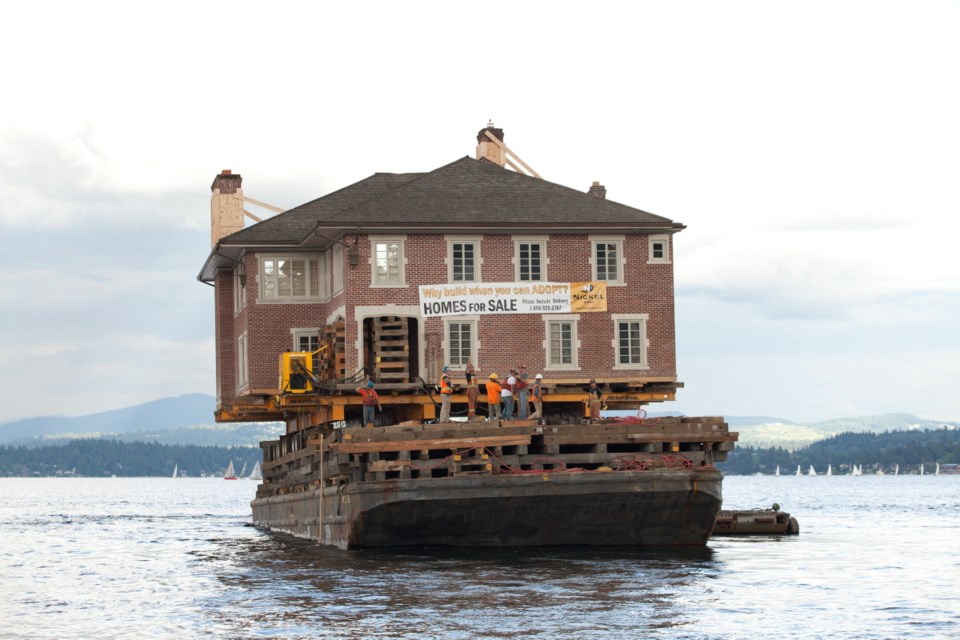
In the past, Nickel Bros. moved few high-end buildings — most were small bungalows. Now, as the volume of houses being moved increases exponentially, they’re being asked to move everything from almost-new custom homes and heritage houses to architecturally designed mansions, Connelly says.
“This is a problem of affluence in North America, where we are throwing away structurally sound, perfectly good, high-quality homes.”
And while houses are larger and more valuable than ever, it’s harder to find ideal vacant lots. Many are farther afield, more difficult to access and at higher elevations.
Only about 50 per cent of the homes Connelly looks at can be moved, for reasons ranging from how the house is constructed to topography and barriers along the travel route. “We just can’t get some of them out. They’re landlocked by encumbrances, although we can sometimes make the geometry work by sympathetically cutting a house.”
But first and foremost, a home needs to have been well built and cared for to be moved — Connelly says those circa 1920 are ideal.
Another 25 per cent are ruled out because of delays with permits and bureaucracy — and the rush to demolish. “We often can’t line up the time frame because of the hoops we have to jump through.”
Those hoops include co-ordinating with B.C. Hydro and other utilities about power and other service lines along the route, checking for obstacles such as trees and arranging for pruning if necessary, and setting up liability insurance for the move.
To save more quality houses, municipalities, advisory committees and regulatory bodies need to speed up the process and ease the way, Connelly says.
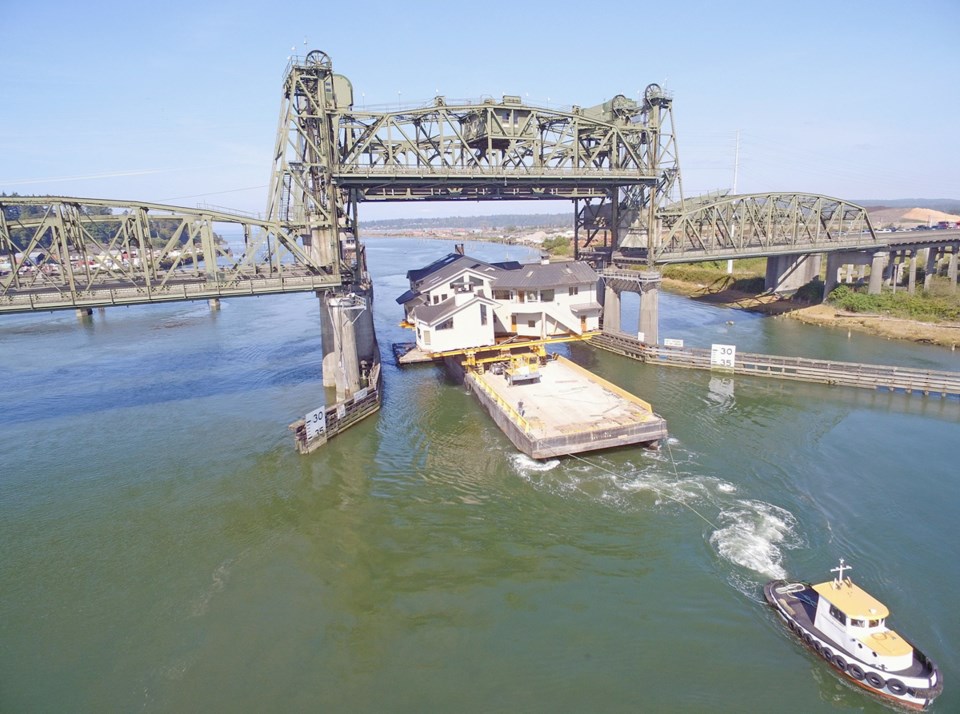
It currently takes three to six months to organize a move, and often Nickel Bros. gets called too late to make it work. In some municipalities, a demolition permit cannot be issued until the building permit is issued, and by then, everyone is keen to start construction.
“It’s not that we can’t act quickly. We can, but the onus should be on municipalities to encourage the recycling of whole buildings.”
Despite such drawbacks, more and more people want to make the effort, because moving and renovating an existing quality home costs far less than building new.
“It saves money, resources and has a much quicker turnaround time,” Connelly says.
“What we call a good bread-and-butter house, a modest, single-storey well-built home, can be very affordable to move, because most can be driven down a typical 32-foot-wide street.”
A wider, larger, multi-storey home is a challenge, but can sometimes be cut into sections or have its roof removed.
An uncomplicated move by road can cost $40,000 to $50,000, depending on the difficulty, he says.
Barging costs significantly more, although the company always tries to have two or three homes share the barge to reduce costs. Generally, he says, it’s almost always easier to go by barge.
“Everything is route-specific. If we find a fibre optic cable, that can cost $8,000 right there.”Fibre optic cables are glass and have to be handled carefully. “We were moving a building down Sinclair hill [in Cadboro Bay] once and there was a cable that fed a lot of UVic,” Connelly says. “Dropping that one cable cost $13,000. They are tricky and have to be lowered to the ground and laid in troughs. You don’t disconnect them.”
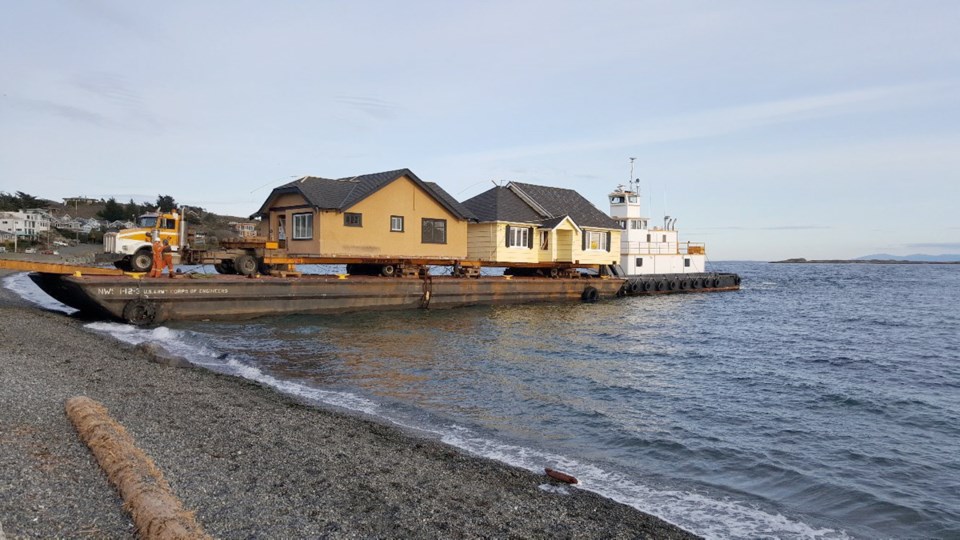
Heritage houses often have steeper-pitched roofs, which means cables have to be lifted or dropped, and Hydro or Telus crews might need to work alongside the movers during the night, an expensive proposition.
One new wrinkle for house-movers is traffic-calming and beautification measures on city streets, including additional traffic islands, boulevards and trees, which is slowly eliminating available corridors. “It’s a nightmare now, especially with all the stuff hanging out in the middle of the road,” Connelly says.
“We have lost part of Pandora with overhead signs for crosswalk signals and bike-lane notifications that lean into the road. Planners are not thinking about bringing large-size loads along streets.”
A trickier move involving a bigger building can cost $75,000 to $85,000.
Yet it’s still worth the trouble,Connelly says.
“There are a lot of very refined buildings, turn-of-the-century [homes], beautiful homes from the mid-’40s and ’50s that can be recycled and reused rather than mulched. Houses are not like cars. It’s a myth to think just because a house is old, it’s not good anymore. Sometimes the opposite is true.”
Connelly believes housing construction quality began to change in the late 1970s, “when people cared more about interiors than exteriors and it was all about fancy kitchens and bathrooms and fancy furniture.”
Ironically, he says, some municipalities have decreed they don’t want homes moved in that are more than 30 years old. Yet those are often very well-built structures, with edge-grain Douglas fir and “real plywood.”
Other municipalities have said if a building is moved in, it must be brought up to existing building-code standards, which means things such as two-by-four walls would need to be replaced with two-by-six. “So that’s not going to happen.”
The company recently moved 15 character buildings from Oak Bay to create an “affordable subdivision” on San Juan Island for a non-profit society. Americans like our premium homes, he says — especially at a 30 per cent discount, thanks to our dollar.
And it goes the other way, too.
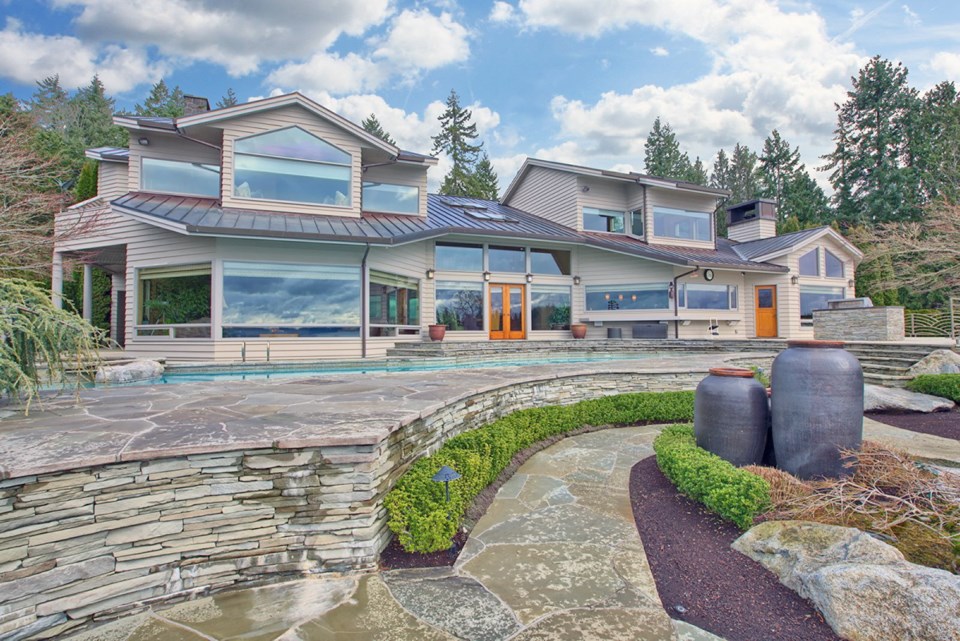
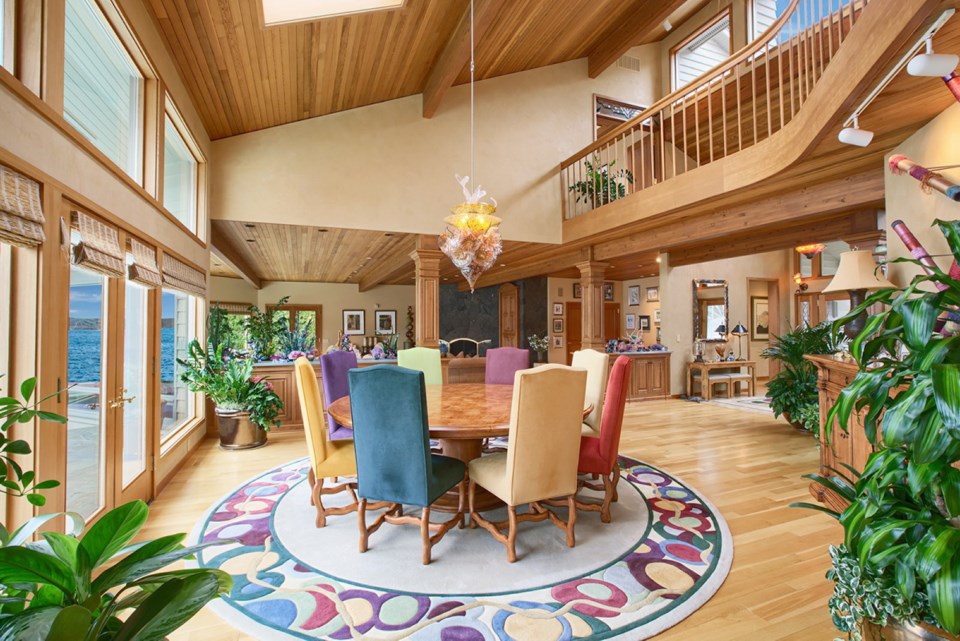
Nickel Bros. is currently working with several Canadians wanting to buy an American home appraised at $5 million US, which is being sold for a fraction of that cost. “It’s a brilliant house, where no expense was spared, but it’s very complex to load,” Connelly says, adding it might be headed to Quadra Island.
One area where the company has seen rising demand for houses is Gabriola Island. “We put two houses there in the last 24 hours,” he says. “People on the islands desperately need houses and often have to wait in line for good, certified builders.”
Lifting and loading houses is a highly specialized job, Connelly says — one that’s not for amateurs, or cowards.
“Our guys have taken the raising of houses to a real art form. Some of them have been doing this for 40 and 50 years and what they do is really noble.”
The weather is one of the biggest unknowns in any move over water, which makes scheduling a headache.
“When you put a two-storey building on a barge, it becomes a sailboat, and when the wind comes up, you’ve gotta find shelter, and fast,” Connelly says.
“We were planning on off loading a house onto Orcas Island yesterday and got blown off by the wind. When that happens, a barge must find a safe harbour, but we are struggling against the elements all the time.”
The barges have flat bottoms, which means they can slip sideways in wind, “so when we are barging in for touchdowns, we always have a tug and a shallow-draft little push boat, to control the barge as it gets closer to shore, until it’s winched in tight.”
Yes there are “moments of terror” on some jobs, but a tremendous amount of planning goes into every move and the company carries copious insurance, he says.
One time when they were delivering a big house onto a beach on Lopez Island in the San Juans, the 25-metre-ramp started to sink as the house went over it.
“We have engineers calculate the pounds per square inch, in terms of ground compression, and we always plan to the highest level, so … we doubled the number of sets required underneath the long, double ramp,” he says. Those “sets” brace up the ramping system.
But as the house came off the barge and across the beach, the ramps began to sink and the house slid off and onto the beach.
It was a writeoff, but the loss was covered by insurance.
In the end, Connelly says, the company garnered some great press “because the cleanup was so quick and done within four or five days.”
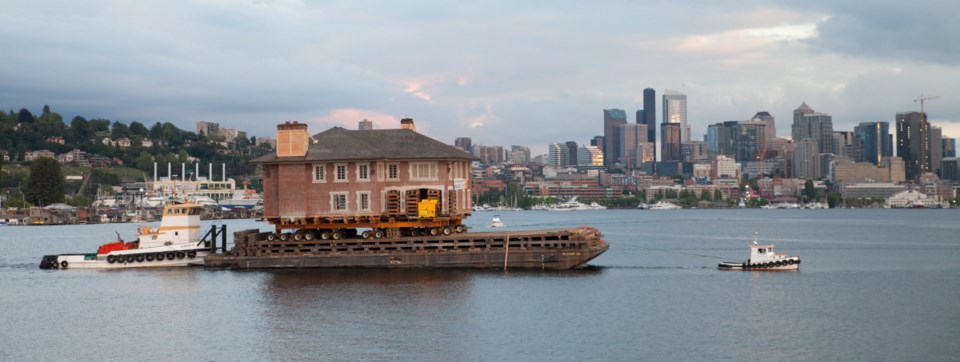
Nuts and bolts of a move
How exactly is a move done?
The company puts hydraulic jacks under a house, strips out the basement, detaches what needs to be separated and lifts.
A large steel trailer is rolled under the building and the house is lowered, locked and bolted down.
Moves usually take place between midnight and 5 a.m., with a maximum 100 kilometres travelled per night. It’s a two-night drive from James Bay to Sooke, for instance, so a house is parked along the way.
If travelling by barge, a house is loaded at high tide using a ramping system that can reach up to 25 metres. The barge deck is three metres above the water line, and the crew can comfortably ramp up another four.
An excavation, shaped like a shallow swimming pool with a ramp, is prepared. When the house arrives, it is driven down into the hollow. A foundation is usually built under the raised house, which is later lowered into place.
